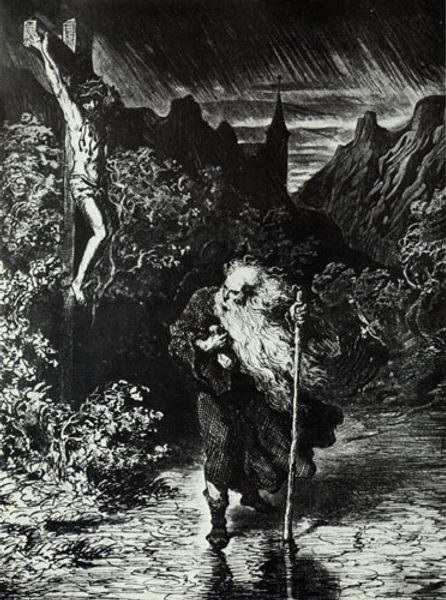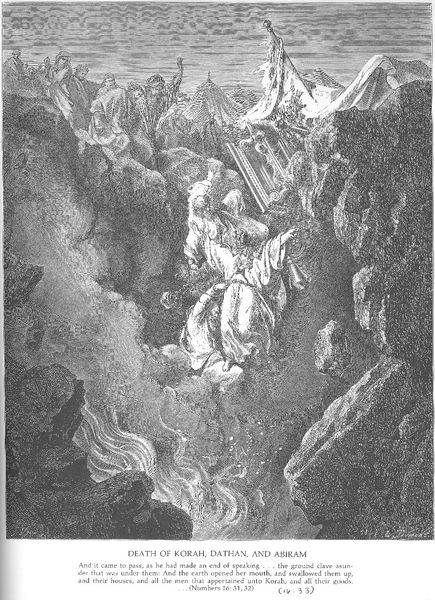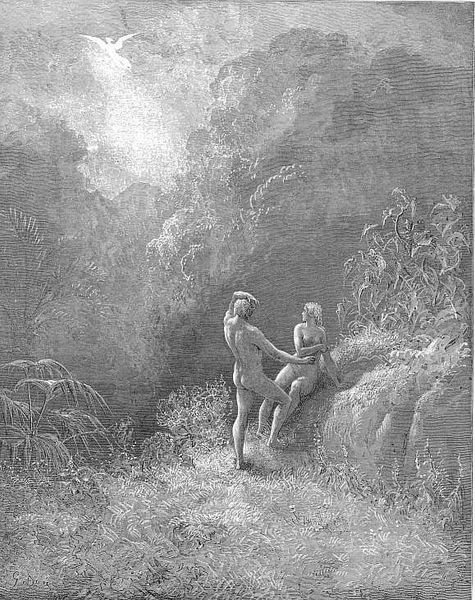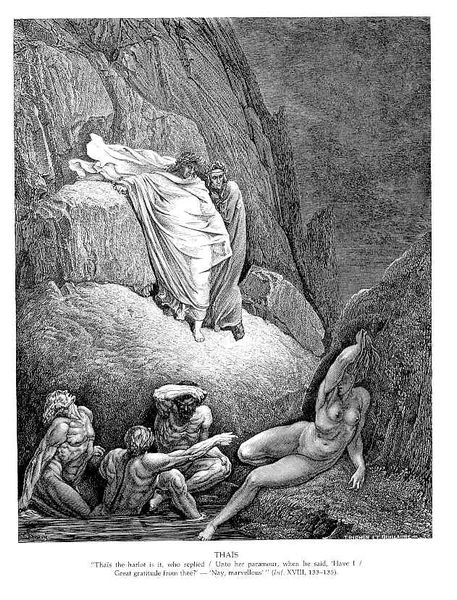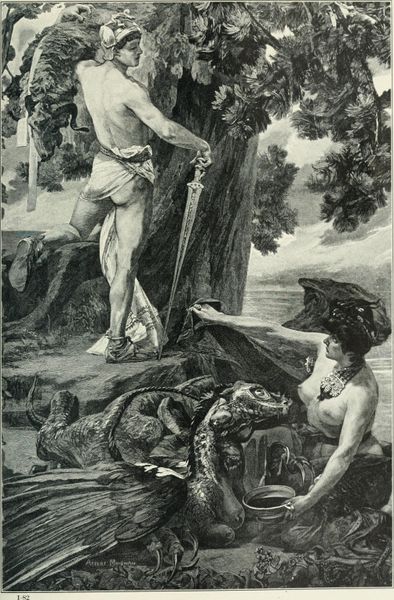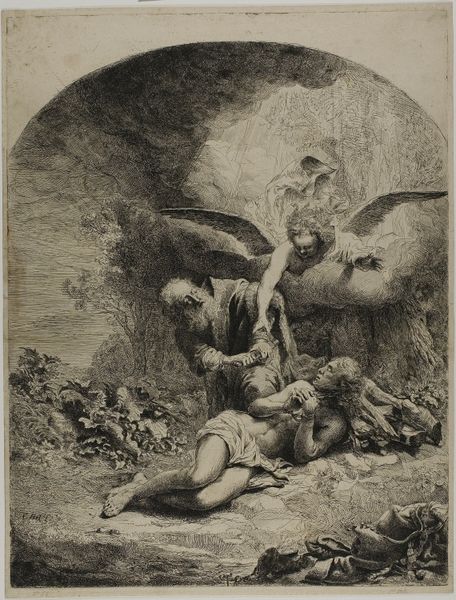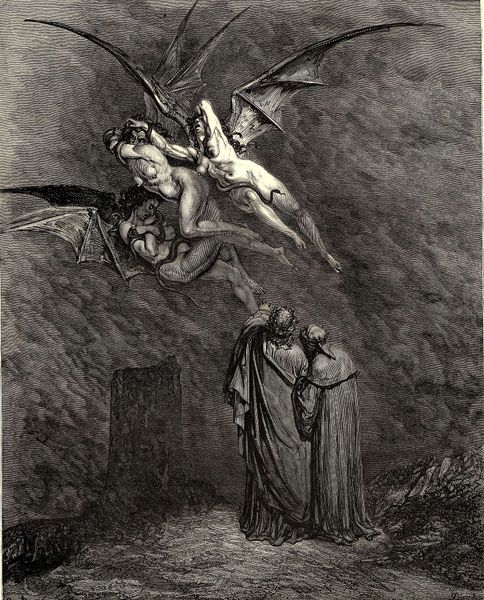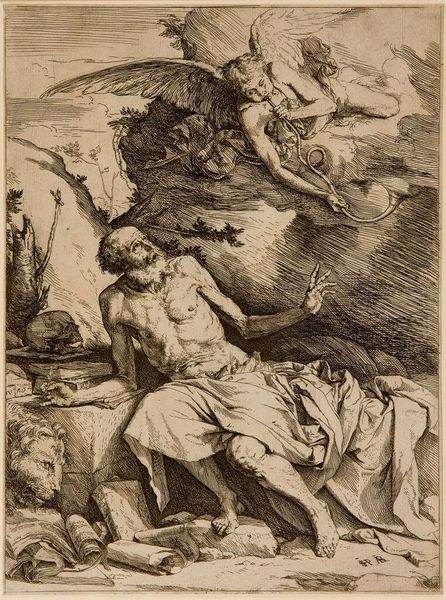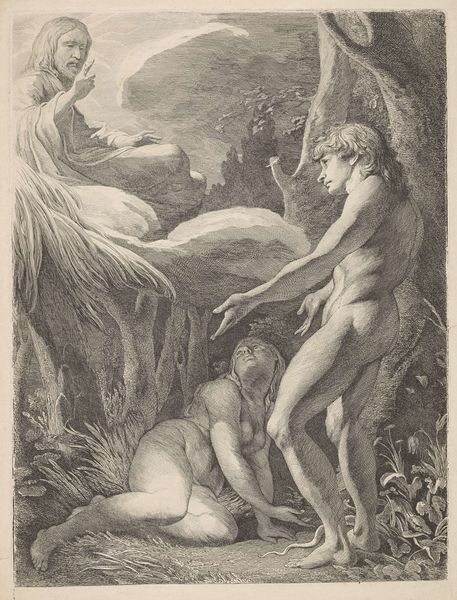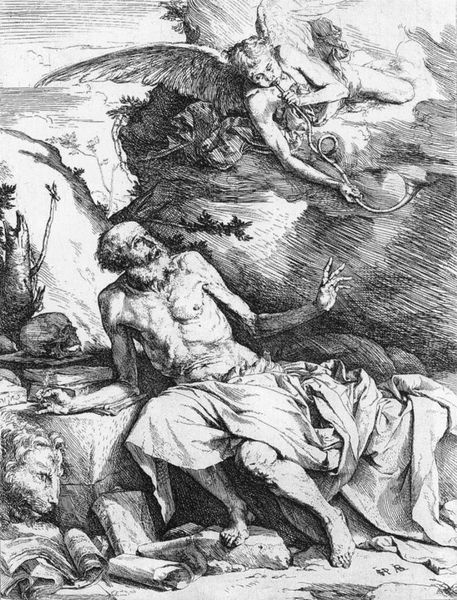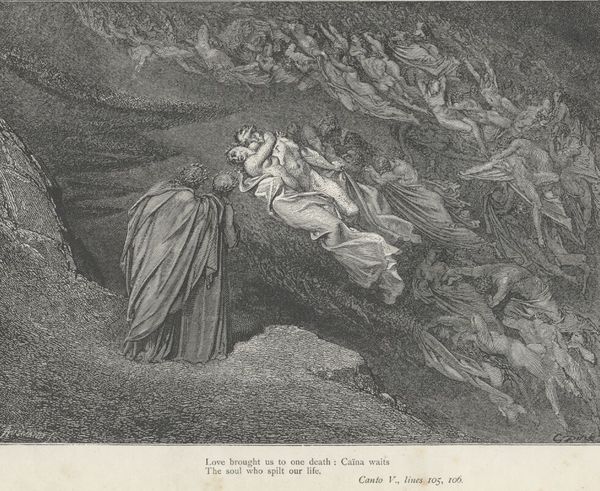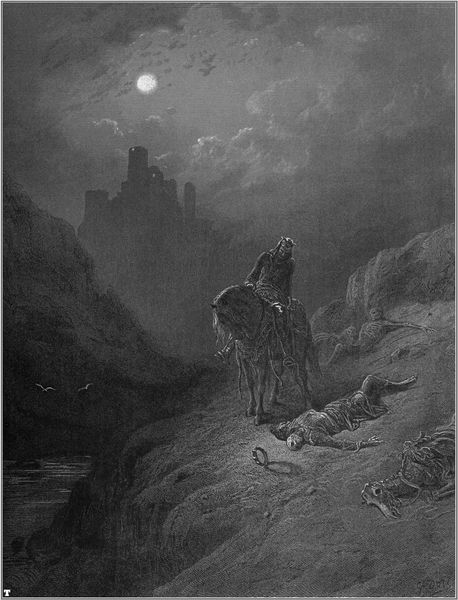
engraving
#
narrative-art
#
landscape
#
charcoal drawing
#
figuration
#
rock
#
romanticism
#
christianity
#
men
#
line
#
history-painting
#
engraving
Copyright: Public domain
Editor: We’re looking at Gustave Dore’s engraving, "Cain and Abel Offering their Sacrifices." It depicts a stark, dramatic scene with swirling smoke. It feels quite theatrical. What do you see in this work, especially considering it's an engraving? Curator: The choice of engraving as a medium is crucial here. Dore uses the line to meticulously describe not just form, but texture and weight. Look at the rendering of the smoke—it's not just 'smoke', but an exhalation, a *thing* born of labor. The landscape too is shaped by implied forces; note the stark, almost industrial feel of the rocks in the foreground. The ‘Romantic’ sensibility doesn’t just spring from emotion, but from specific material choices shaping our viewing experience. Does the clarity that this specific labor generates remove some of the divine mystique or do you think it adds to the narrative? Editor: That’s a really interesting point about the labor involved! I hadn’t considered how the medium itself informs the narrative. It makes the scene feel less…divine and more like something built and made, with intent and consequence. Curator: Exactly. We are forced to confront not just the narrative, but the very process by which that narrative becomes ‘real’ for the viewer. This kind of focus reminds us how cultural meanings around figures like Cain and Abel are, in fact, *constructed* for us. It forces questions around the economic drivers for how these narratives came to be and why we keep looking at them. Editor: It changes how I view this now, considering the physical act of creation, and how that informs our understanding. Thanks. Curator: Indeed, by understanding how it’s materially and socially produced we start to really appreciate Dore’s craft and its effect on the meaning of the artwork.
Comments
No comments
Be the first to comment and join the conversation on the ultimate creative platform.
